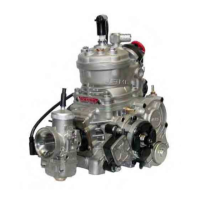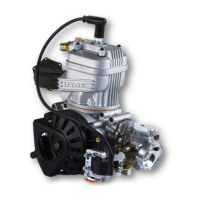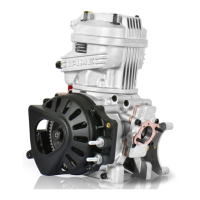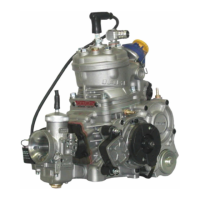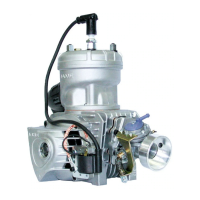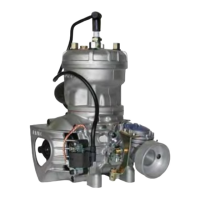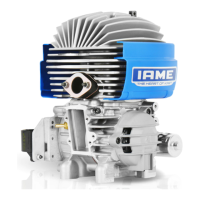10 11
72 7,20 6,55 83 8,30 7,55
73 7,30 6,64 84 8,40 7,64
74 7,40 6,73 85 8,50 7,73
75 7,50 6,82 86 8,60 7,82
76 7,60 6,91 87 8,70 7,91
77 7,70 7,00 88 8,80 8,00
78 7,80 7,09 89 8,90 8,09
79 7,90 7,18 90 9,00 8,18
80 8,00 7,27 91 9,10 8,27
81 8,10 7,36 92 9,20 8,36
82 8,20 7,45
For the operation limit of 15000 RPM the following table (Tab.2) has been prepared.
SUGGESTION:
?? During the track tests we recommend use of a tachometer recording the
max obtained engine RPM.
?? Use sparkplug caps with a resistance of 5KO to avoid eventual
interferences between the engine ignition and the tachometer and/or
telemetry.
The following example should clarify the procedure for the optimization of the
sprocket .
Assume to use the engine with Z=10 teeth engine sprocket and that during the
preliminary track tests a Z=72 teeth axle sprocket has been used.
?? From table 1 with Z=10 as engine sprocket and Z=72 on the axle sprocket, a ratio
of 7.20 is found.
?? Make a few laps on the track and, let us assume that you read 14.000 max
engine RPM.
?? From the table 2 to achieve a max RPM of 15000 RPM (operating limit for the
Leopard engine) a sprocket ratio from 7.61 and 7.82 should be used (having
used, during the tests, a sprocket ratio of 7.2 and having achieved 14.000 RPM
max.).
?? From table.1 , with these values, a sprocket ratio of 10:76 / 10:78 should be used
or, having a Z=11 on the engine sprocket, a ratio 11:85 should be used.
Tab.1

